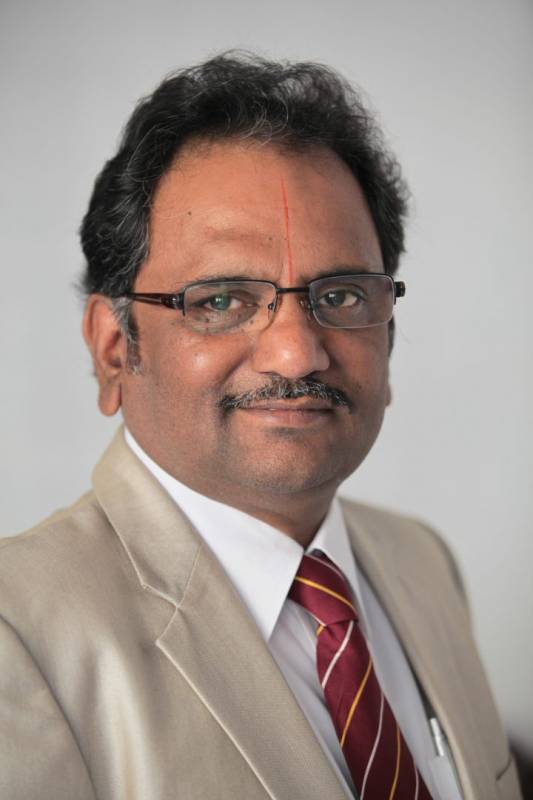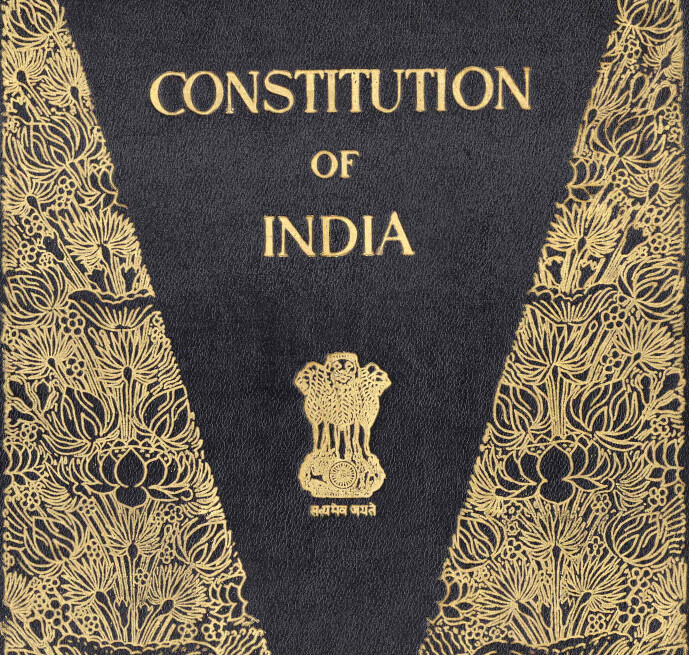Amending articles 370 & 367 : President’s pen stroke robs J&K constitution
By M Sridhar
The President’s pen stroke is so powerful that the entire Constitution of Jammu & Kashmir was abolished at once. Article 370 became useless and Article 367 was amended to equate an absent Legislative Assembly with a Constituent Assembly.
This finally resulted in the loss of special status of Jammu & Kashmir and reduced it to a Union Territory. The Constitution of India gave power to the Parliament to alter boundaries of states but not to reduce it to a Union Territory, removing the sovereign powers of the state and assaulting the federal feature of the Indian polity.
Amendment to Article 367 is more serious because what cannot be amended with two-thirds of majority in Parliament and ratification by 50 per cent Assemblies was achieved by the Presidential Order.
The President’s order C.O. 272 amended Article 367 which is an interpretation clause of the Constitution of India. After this Presidential Amendment, Article 367 declares that “The expression ‘Constituent Assembly of the State…’ in Article 370 (3) shall be read to mean ‘Legislative Assembly of the State’. It could be interpreted to equate the Parliament today with Constituent Assembly!
This is neither temporary nor special for any state, but applicable generally with dangers for future. In amending Article 367 also the Union has drawn its authority from Article 370(1). It has forgotten that this amendment was of substantial provision of the Constitution itself, which could be done only under Article 368 requiring two-thirds majority of Parliament present and voting besides the ratification by 50 per cent of State Assemblies.
Having no Constituent Assembly for Jammu & Kashmir is a major impediment in making thorough the changes in Article 37o and the state’s constitutional relationship with the rest of the nation. The Constituent Assembly that came into existence for drafting the Constitution for J & K was disbanded in 1957 after approving the Constitution for the state besides finalising changes in Article 370. That the Constituent Assembly has provided scope for abrogation of Article 370 along with its contents and special powers with a condition that the Constituent Assembly should have recommended the same. It is not a matter of mere procedure but a mandate that the decision should be taken by such a house in which members are specifically selected for drafting the Constitution. No member of the then Constituent Assembly of J&K could be alive today. No new Constituent Assembly was contemplated. Can a legislative Assembly dissolve the Constitution of its state? Can a Governor assume authority of the Legislative Assembly and get into the shoes of Constituent Assembly to remove the entire Constitution?
The downward journey of Jammu & Kashmir from accession in capacity of independent state to annexation as Union Territory was not with consultation of people. The Union Home Minister Amit Shah is now the Shah of Kashmir, with Lieutenant Governor to assist him being seated in Srinagar. Next election will be for an assembly of UT without much of erstwhile powers, neither special status nor statehood. The elected representatives will have no power to pass any legislation without approval of the Lieutenant Governor and administrator.
The Presidential Order dated August 5 has totally robbed the Constitution of J&K and its constitutional relationship with New Delhi. This happened without consultation or communication or recommendation of the people of J&K, or approval of its Constituent Assembly [in violation of Article 370(3)] nor after consulting the J&K legislative assembly [in violation of article 3] after imposing complete communication black out and keeping the entire state under ‘house arrest’. And it is described as the roadmap for complete integration of the people of J&K with the rest of India.
Article 370 is meant for preserving autonomy for Jammu & Kashmir, leaving the decision making power regarding the relationship with the Centre to the state’s Constituent Assembly. It is a serious limitation on the authority of Executive and Parliament to pass such orders/legislation for the state of J & K. Under Articles 370(1)(b) and 370(1)(d) the power of Parliament is limited to areas that were listed in the instrument of Accession. It can pass legislation on other matters also only if it is accepted by the Government of J&K. As per Art 370(3) the recommendation of the state’s Constituent Assembly is required before the President modifies or makes a declaration that the article will be inoperative. Thus, to meddle with Article 370 they must have recommendation from the Constituent Assembly of J&K. The Presidential Order claims that it was promulgated ‘in exercise of powers conferred by clause (1) of Article 370, the President with concurrence of the Government of State of Jammu & Kashmir’.
Making a dead Assembly equal to Constituent Assembly through an executive order is unthinkable. It is surprising that such a major flaw is passed on as a historic change. Being a breach of Constitutional provisions of the Amendment this also resulted in usurping of the powers of the Parliament.
One needs to understand the serious impact of this amendment to Article 367: With this, it is now enough to have recommendation of the state legislature to abrogate special status of J&K. The problem does not end here. As the State Legislative House of J&K was dissolved and President Rule is imposed it implies that the Governor will perform the legislative duty of the ‘J&K Assembly’. The legislature is equated with J&K Constituent Assembly. Thus, the consultation with Governor (do not know whether happened) becomes equal to that of J&K Assembly, and J&K Constituent Assembly!
The Governor, being an appointee of the Centre as a formal head of the state, who reports to Centre under the Constitutional scheme, about the state hardly represents the state. Especially during the Centre’s rule he is the temporary ruler till representative government is constituted. Because of the absence of a regular government he does not have benefit of advice from the chief minister or his council.
When state Assembly is dissolved, the Parliament will legislate for that state as a stop-gap arrangement and to meet the exigencies of the Budget. But Parliament cannot replace the state Assembly for all aspects of governance. How can a Governor, a Centre’s appointee, amend the Constitutional structure of J&K, without recommendation of the Constituent Assembly or at least the consent of the state elected representatives?
This pen stroke is a sun stroke to Constitutionalism in India, which distinguishes a mere representative authority of Legislative Assembly from sovereign authority of the Constituent Assembly. Indian Parliament also cannot be equivalent to Constituent Assembly, because the Parliament makes law as per the Constitution whereas the Constituent Assembly builds the Constitution for the nation.
Mr. Madhav Khosla, a Junior Fellow at the Harvard Society of Fellows explained this saying: “Indeed, it is precisely this distinction that is at the heart of India’s basic structure doctrine that prevents certain constitutional amendments on the ground that Parliament, which exercises representative authority, is limited and cannot create a new constitution and thereby exercise sovereign authority”. (https://theprint.in/opinion/the-constitutional-questions-that-arise-from-the-end-of-jammu-and-kashmir-as-a-state/272689/)

The Jammu & Kashmir High Court had ruled in October 2015 that Article 370 cannot be annulled as clause 3 of the provision makes it clear that it is “necessary” for the President to take the recommendation of the “Constituent Assembly of the state” before declaring the provision inoperative. “The Constituent Assembly (of 1957) is conferred power to recommend to the President that Article 370 be declared to cease to be operative or operate only with the exceptions and modifications. The Constituent Assembly (however) did not make such a recommendation before its dissolution on January 25, 1957.” ( https://indianexpress.com/article/india/india-news-india/j-k-high-court-says-article-370-is-permanent-cant-be-abrogated-repealed-or-amended/)
In the absence Constituent Assembly for J&K, it is impossible to abrogate its Constitution without having alternative draft or take out the life under the garb of modifying the Article 370. Because of this impediment, the Supreme Court bench, consisting of Justices Adarsh K. Goel and R.F. Nariman, on 4 April 2018 (https://indiankanoon.org/doc/37715830/) observed that “it is impossible to abrogate Article 370 of the Constitution, conferring special status on Jammu and Kashmir, because it has acquired permanent status through [its] years of existence.” (https://timesofindia.indiatimes.com/india/article-370-has-acquired-permanent-status-supreme-court/articleshow/63603527.cms) This was reiteration of SC order in 2016 (https://indiankanoon.org/doc/105489743/) also the Delhi High Court in 2017 (https://indiankanoon.org/doc/153910827/).
(Author: Prof. Madabhushi Sridhar Acharyulu is a former Central Information Commissioner & Professor of Law at Bennett University, Greater NOIDA. The views and opinions expressed in this article are those of the author)